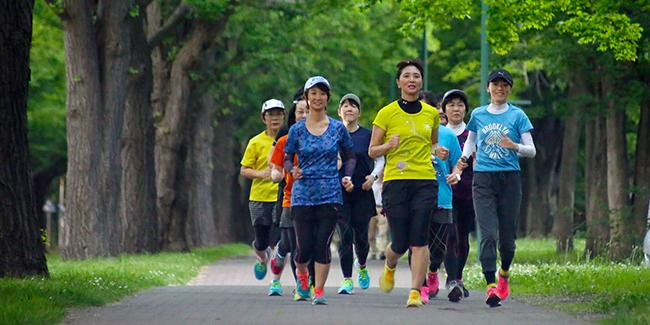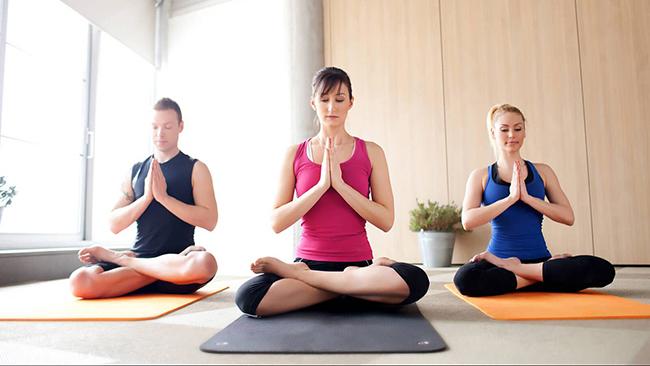It can be said that full-body exercise is the best exercise for those who are not amateurs but want to keep fit and keep their collective health.
One of those types of exercise is regular jogging and running, which keeps your whole body in check and your cardiovascular health at its best.
We always think jogging everyone knows from young to middle age, even the elderly can run, but when we run, we need certain precautions because you do it wrong will induce exercise psychosis or phobias.

In addition to pre-exercise nutrition, we also have to pay attention to many things around running.
This article invites you to learn the basics to avoid making mistakes in your run to avoid injury and get the most out of this easy sport.
Join Bellyfatzone to point out these common mistakes and learn how to run properly.
Mistakes when starting jogging
Compared with modern gyms with many machines, with various exercise regimes at many costs, running is probably the “casual” sport and is the easiest. Anyone anywhere can do this sport.
But easy doesn't mean it's simple; many people, when they first start running often make some basic mistakes that make exercise efficiency less effective, quickly lose energy, fatigue, and even cause trauma and speed discouragement.
1. Choose the wrong shoes
There is a funny comparison of the importance of shoes to running: “You may not get dressed while running, but you cannot run barefoot.”

Many people mistakenly believe that bata shoes or loafers, everyday sports shoes can be used for running. Or someone else makes use of old shoes, shoes that are not the right size for their feet …
These shoes will make you uncomfortable, burning soles, easily slip, and lead to injury.
The best way, go to sports stores to ask a specialist to advise you on the best running shoes. Each shoe should only be used for 800-900km of runs.
After using 1/2 the shoe's life cycle, you can buy another pair to spin it around. That will help your shoes last longer by getting “restorative rest” time.
Read more: Lose belly fat running.
2. Running too much
The human body is very miraculous; it has incredible endurance, incredible toughness, and great adaptability. But that does not mean that you have your body run 5-10km on the first day when you have never walked more than 1km before.
Before jogging to 5km, do a 1km or 2km run for a week, and increase the distance gradually, 10% per week, so that your body can adapt.
If you run too much in a short period of time, you will have joint pain, tendon pain, lung pain … and lose interest in exercising.
Read more: Should I Listen to Music While Running? Unsafe Things You Need to Know
3. There is no break between running time
Many people think that jogging is about running all the way, and then when you finish, slowly walk to rest. But that's not the best way to run.

According to experts and runners share, running is a combination of running and walking.
Basic jogging exercises for beginners are 5 minutes slow, alternating with 5 minutes of walking and then 5 minutes slow, repeating this process until the end of the workout.
This is a “beginner exercise” for beginners and a competitive strategy of long-distance runners to maintain endurance and help the body not tired, reduce the risk of cramps. , myalgia, chest pain.
Read more: How To Lose Belly Fat By Running?
4. Run after someone else
Whatever you do, it's still more fun to have friends. That is why many people always invite friends to practice, jog together to increase morale and excitement.
But if you choose the wrong “you run” with me, it will make your practice not as effective as expected.
If the person has been jogging and has a faster pace than you, it will cause you to try hard to chase your body because of the “dignity,” leading to haste, overwhelming, and inaudible to your body.
If the person is running slower than you, it will cause you to be pulled back at their speed, making your initial goal unattainable.
So when you start running, you should run alone. Can listen to music to feel less bored. Then you can join running groups and team up with people who are at the same pace as you, which will be more effective.
Read more: How To Improve Running Form Avoid Injury And High Efficiency.
5. Improper breathing
If you have been jogging for 10 to 15 minutes and start to experience hip shock, you breathe incorrectly. You breathe too shallowly and too quickly; just breathe through your nose, not through your mouth.
View more: How To Lose Belly Fat for Kids

How to breathe correctly when running:
- Breathing the combination of nose and mouth, breathing deeply through the nose, and breathing slowly through the mouth will help you breathe better, not short of breath when running.
- Exhale through your mouth and focus on breathing evenly, slowly breathing out the CO2 from your body.
- It would help if you practiced breathing with your diaphragm or abdominal muscles, breathing deeply to get more air. Breathing through your chest is shallow, shock-prone breathing.
- When you first start jogging, try running at a pace where you can breathe normally.
Read more: How to stop foot pain when running.
How to run properly and effectively for health
With the starting jogging mistakes that Bellyfatzone pointed out above, do you make any mistakes? And if I want to run properly, effectively, and for good health, what to do? Let's find out now.

1. Warm-up before jogging is a prerequisite for jogging properly
The movements of hand joint, leg joint, muscle stretching combined with deep breathing, running in place … are the best warm-up movements for runners.
You should do these movements for at least 2 minutes for one movement so that the joints and muscles are “signaled” in advance about the upcoming movement, reducing symptoms such as hip shock and cramps.
2. Correct running posture
Most of the effectiveness of running for good or bad more or less depends on your running position. The best running posture is:
- Always straight between the back, shoulders, and head is the basic and most important thing. Avoid leaning back or leaning forward will cause the upper body to be tense, easily make the person tired, aches after running, and the blood is not circulating all over the body.
- Relax your shoulders and arms. Keeping your upper body straight but not stiff, relax your shoulders and arms. The hands can be half-grasped, so do not hold tightly, which will affect your breathing.
- Always keep your arms around your waist, bend your elbows, and swing slightly when running. Many people have a habit of raising their hands to their chest, which will make the shoulders stiff and tired quickly.
3. Ground with your entire foot

Beginners often run instinctively; that is, as they normally walk, they will be the same when running. But if you land in the wrong position, you can easily injure yourself, so you should pay attention:
- Beginners running should land with their feet. Ground gently with the center of the foot to the toe.
- Feet straight in the direction of running, avoid rotating the ankles when landing on the ground that can cause the ligaments to be pulled, which can easily lead to injury.
- Longtime runners tend to land on the toes to train the banana muscles (calf muscles), thigh muscles and reduce the pressure on the bones and joints.
4. Lift your feet as close to the ground as possible
It is not a sprint or a Mission Impossible; you don't need to lift your legs square like Tom Cruise.
The best way to run for endurance is to lift your legs as close to the ground as possible, limiting your knee lifts. This will save you energy when running.
5. Running 3-4 times/week, 30 minutes/time

Anything too is not good. Regular and regular jogging or any sport is the most important factor for good health and a healthy figure.
Therefore, experts recommend that you keep the habit of jogging about 3/4 times per week for about 30 minutes each time. You should also take 1 day of complete rest to restore strength to muscles and the whole body.
6. Don't compare with others
Each body has its own mechanism of action, so don't compare your own results with others. You need to listen to your body, find your limits, and improve your running ability, running time, and endurance.
Evaluate yourself after each jogging session; how much progress have you made compared to yourself the day before, last week or not?
From there, you will be motivated to continue to improve because running is for fitness, not a survival race.
We wish you all the most comfortable, fun, and effective running tracks with the information shared above.
Common Running Mistakes & How To Avoid Them
If you want to practice sports, take good care of your health, visit Bellyfatzone regularly to update the latest and most useful health information!
View more:
- How Often To Replace Running Shoes?
- Morning Exercise Routine For Beginners – Mistakes You Need To Avoid To Be Effective
- How To Lose Belly Fat By Running?
Hopefully, the information above has helped you gain some more knowledge about “common running mistakes and how to avoid them” and bring some small value. Please share this article if you feel it is useful. Thanks!






